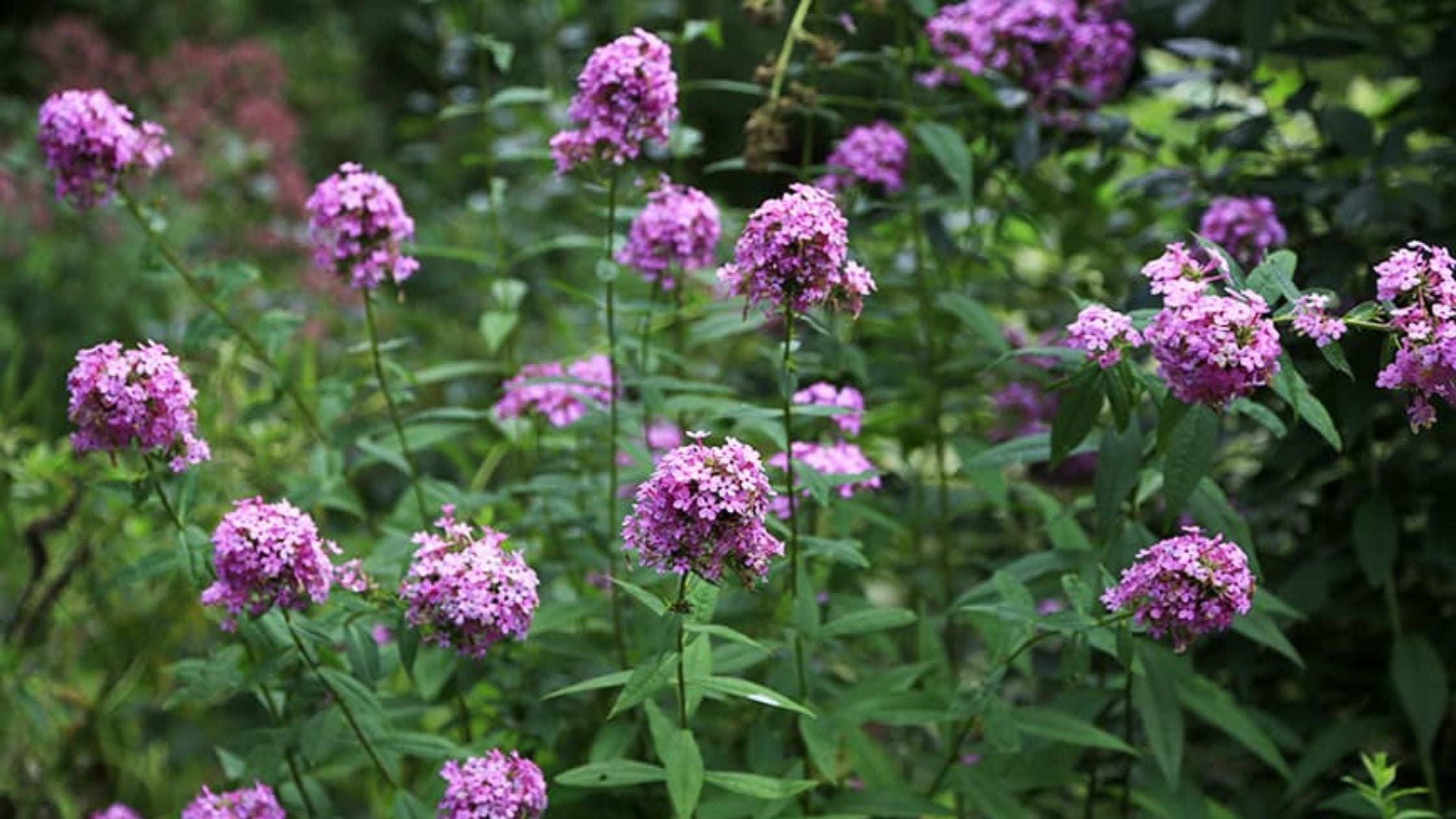Perennial of the Year 2024

Welcome to 2024! A New Year and a new Perennial of the Year! This year the Perennial Plant Association has given this honor to Phlox paniculata ‘Jeana’ – Zones 3-8. I am quite excited about this tall, upright phlox being put in the spotlight. It not only has lavender pink 15 cm panicles that put on a lengthy flower display but is highly resistant to powdery mildew! Actually, the highest powdery mildew resistance of any garden phlox.*
Jeana has been around the gardening world for a few years. This herbaceous perennial phlox is native to North America, being discovered along a river bank near Nashville, Tennessee by Jeana Prewitt. She first noticed this plant because it did not have powdery mildew!

Height: 90 cm to 1.5 m. Spread: 90 cm to 1.2 m. Jeana is tall, tough and sturdy. It has an upright, bushy, spreading habit of growth and rarely requires staking. It is not invasive. Mature height and spread will vary from Zone to Zone.
Location – Phlox p. ‘Jeana’ is usually used as an excellent mid-border plant in perennial beds. It can also serve as a long flowering backdrop plant in annual beds. Plant Jeana in a garden bed that receives morning sun for six plus hours. If you must put it in a south location, try to find an area that receives some afternoon shade. If you have the room, plant odd numbers periodically throughout a large perennial bed which will give the bed a pleasing cohesive look.
Soil – Phlox p. ‘Jeana’ likes a moist, fertile, well- drained, acid to neutral based soil. It does not like to sit in water. Avoid planting in very dry locations.
This plant is very cold hardy. I still would recommend mulching the first two years in fall while the root system is establishing. Mulch with a 5 cm layer of compost, being careful not to cover the crown (central growing area of the plant). This will provide winter protection and much needed nutrients during the spring thaw. Otherwise, fertilize once in early spring as new growth begins to show. Use an all- purpose water-soluble or slow-release flowering perennial fertilizer. With proper care and attention, Jeana can live for up to 10 years!
Flowering – Lightly scented, lavender pink panicles adorn the top of the stems from July until late September. These panicles are made up of hundreds of tiny flowers (florets). There are actually twice the amount of florets in a panicle than other Phlox paniculata! It is this feature that research shows is the reason Jeana receives the most butterfly visits of any phlox during the blooming season. They also attract bees and hummingbirds. Dead-head to encourage more blooms and a longer blooming period. Jeana also makes a great cut flower and can be used for drying.
Watering - To avoid powdery mildew, only water at ground level. Keep the soil moist but not saturated.
Propagation – Division or stem cuttings. Stem tip cuttings can be taken in spring and started in soil or water. If dividing a root ball, divide every 3-5 years in spring as new growth is just peeking through the crown of the plant.

Jeana provides structure, medium texture and great color in the middle rows of large perennial borders. For an impressive display plant in odd numbered drifts and balance with finer or coarser textured perennials, leaving some space between each plant for good air flow. This garden phlox looks particularly impressive with background shrubs such as Diablo and Summer Wine Ninebark and Purple Leaf Sandcherry. The subdued lavender color goes well with many perennials such as Echinacea, Asters, Liatris spicata, Rudbeckia, Thread-Leaf Coreopsis, perennial Geraniums, Shasta Daisies and perennial Salvias such as Violet Profusion and PW Color Spires ‘Violet Riot’. It is also deer resistant!
* Powdery mildew is the arch enemy of garden phlox (P. paniculata). Sadly, it is a common fungal disease that shows a distinctive greyish white coating that begins on lower leaves and makes it way up the plant. The infected leaves will very quickly turn yellow and brown. Cool nights, warm days, and crowded plantings in shady or semi-shaded locations are a recipe for powdery mildew. To help prevent powdery mildew keep your perennial beds clean, do not crowd plantings, avoid overhead watering and at first sight of this disease begin a fungicide application regimen. Remember, fungicides are preventatives, not cures. Do not compost plant material with powdery mildew!
